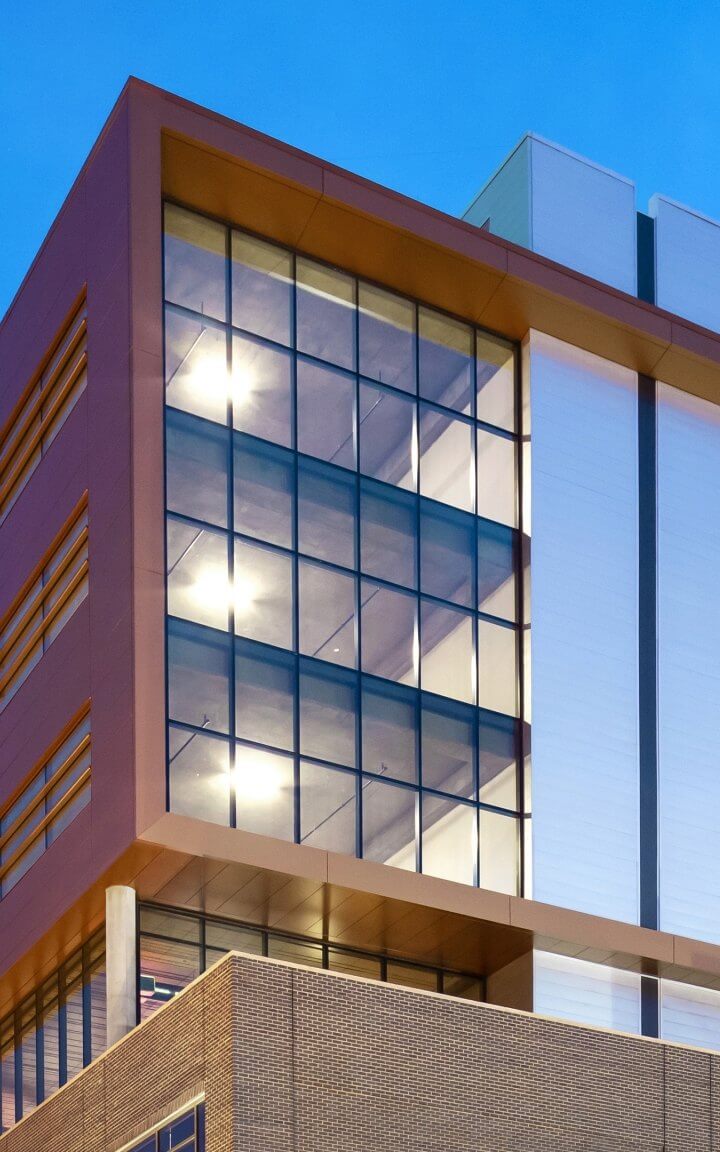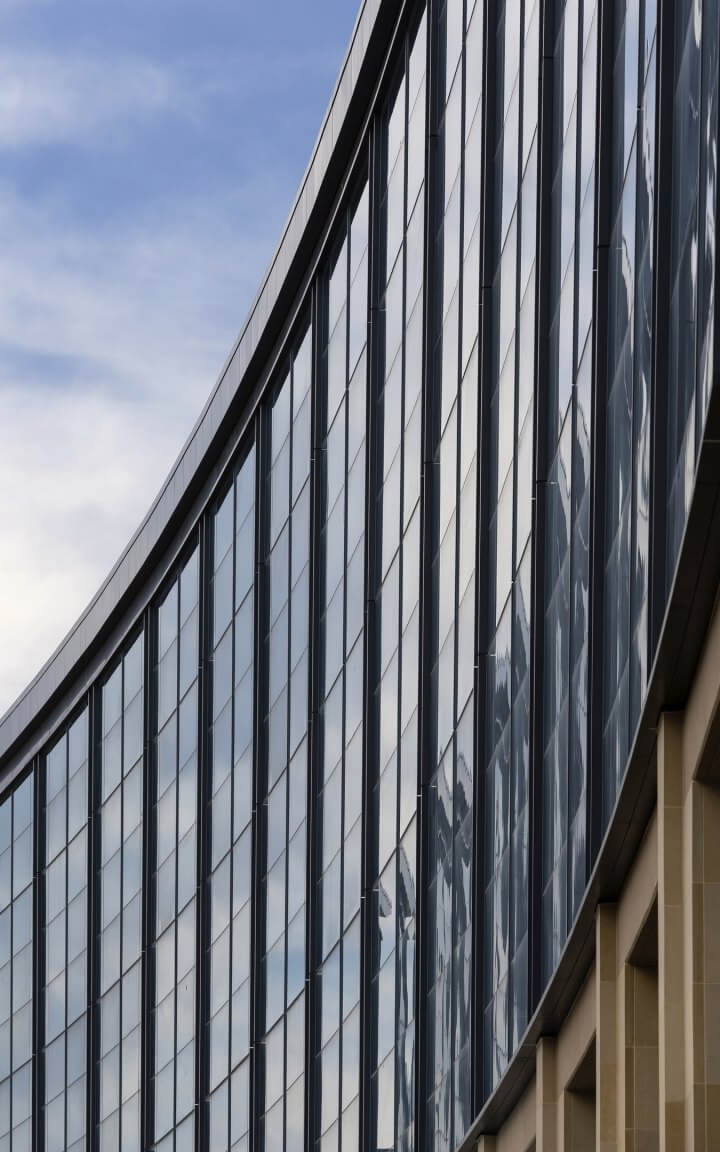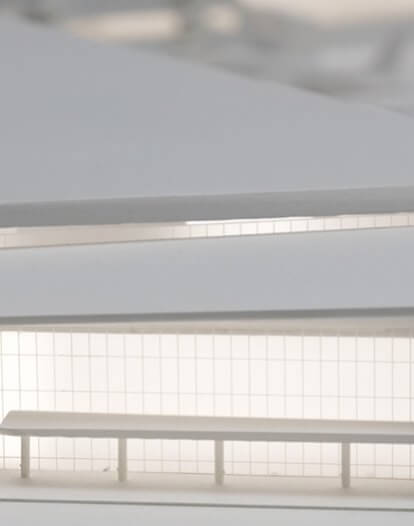Designing the Workplace for Mental Health

Can Workplace Design Support Mental Health?
There is plenty of research that supports the notion that our physical environment impacts our mental health. When we also consider that about a third of every weekday is spent at work, it is clear that the design of the workplace can have a significant impact on a person’s mental health. Sean Kim Nickerson explores various ways that workplace design can meet employee fundamental needs and support their mental health.
Safety First
At the fundamental level, the workplace should be a safe environment that fosters employee well-being. In addition to being physically safe, designers should consider psychological safety. An insight from Corgan’s “Designing the Workplace for Social Safety and Well-being” is that workplaces need to walk the line between being open as well as having areas for “refuge.” This concept taps into a primal need for humans to be able to survey their surroundings while simultaneously feel protected. An open office is great for employees who want visibility and promote interaction and collaboration, but it needs to be balanced with their need for privacy by incorporating areas with booth seating, individual work pods, and wellness/meditation rooms. Even something as simple as high-backed lounge seating can provide a feeling of shelter and security.

Biophilia Benefits
Biophilia, the idea that experiencing the natural environment has a positive effect on humans, was first coined in 1979, and has since become a popular concept in architectural design. Though the theory is intuitive, it is also backed up by research. One study showed mental health benefits – as well as cognitive improvement – in employees who were exposed to natural green elements indoors. Another study indicated that being in nature for 90 minutes reduced overthinking (“self-rumination”) and people demonstrated less neural activity associated with withdrawn behavior (compared to people who spent 90 minutes in an urban environment).
Biophilic elements can be incorporated into workplace design in multiple ways, from direct experiences—like green roofs or outdoor seating in landscaped areas—to indirect exposure through natural materials and colors, biomimicry, views to nature, and natural light. According to environmental studies author and scholar Stephen R. Kellert, design needs “repeated and sustained engagement with nature” to have lasting effects, so the more elements are used, the better.

Let the (Natural) Light In
In Corgan’s Hybrid Report, access to natural light was listed in the top five most important amenities that hybrid workers want in the office. Abundance of natural light has a strong connection to both physical and mental health, while low light exposure during the day is thought to be the cause of seasonal affective disorder (SAD). Incorporating access to natural light is a major consideration for employers: it doesn’t just support better mental health, it also contributes to improved sleep quality, reduced eye strain, and increased productivity and creativity. It’s also the sustainable option, as more natural light means less artificial light and lower electricity use for offices.
One important design intervention to improve natural light access in offices is applying the progressive layout with a core of private offices surrounded by open desks, rather than the traditional method of lining the perimeter of the floorplan with private offices and cutting off access to windows. When this isn’t possible, having common areas—like the breakroom or kitchen—with natural light is a good strategy. For some converted warehouses or other adaptive reuse buildings, especially those with large floorplates, adding a skylight is another option.

Design Impacts for Neurodiversity
According to the National Institutes of Health, between 15 and 20 percent of the population is considered neurodivergent. As these individuals may be more sensitive to stimuli like light, sound, color, and pattern, or have difficulty with organization, designers need to consider strategies that help alleviate these issues. Choosing simple, soothing materials and color schemes is one option to reduce stimuli. One size fits no one. Providing choice is important - a variety of options for seating, lighting, acoustics, and desk configurations allows neurodivergent employees to select the setting that works best for them can help avoid over- or under-stimulation.
Another design strategy to accommodate neurodivergent people is focusing on clear wayfinding and comprehensibility. Intuitive wayfinding and clearly understanding the structure of a facility’s layout is something that is especially important - a key for employees to feel comfortable navigating their workplaces. What works for some (ex: visible signage) might not work for others (ex: employees with dyslexia or other visual processing disorders). Having layers of wayfinding – color schemes, logical pathways between zones, or memorable checkpoints – increases the legibility of an office layout and can help alleviate that anxiety.

Community and Connection
Research has repeatedly found that isolation can be a major risk factor for mental health issues, including depression and suicidal ideation. When considering the sheer number of waking hours many adults spend at an office combined with the insight that 75% of people find friends at work, it is a natural place to find community. On the heels of the loneliness epidemic exacerbated by the Covid-19 pandemic, workplace designers have an opportunity to provide places for employees to truly connect.
Workplace design cannot force connection between employees but our thoughtful designs can create those opportunities. Just like the kitchen is the heart of the home, break areas or work cafes are often the social hub of the workplace. We can encourage workers to frequent these spaces by creating inviting environments with access to daylight and comfortable seating. In addition to a centralized gathering place, it is important to provide a variety of smaller communal spaces as well. These can range from enclosed meeting pods to open informal collaboration lounges – anywhere that encourages face-to-face interaction.

Workplace design needs to provide both physical and psychological safety, but we can do better than the basics: incorporating biophilia and connection to nature boosts employee well-being and bringing natural light in is one of the keys to improving mental health. Today’s workers are more diverse and more demanding than the previous generation. Making sure that diversity, equity, and inclusion initiatives encompass neurodiversity should be the norm and not the exception. For employers to be competitive in recruiting and retaining their top talent, workplace design needs to evolve to meet this demand. To meet the challenges of a diverse, dynamic, flexible workforce, focusing on accommodating the “whole person” —including their mental health—is critical.





